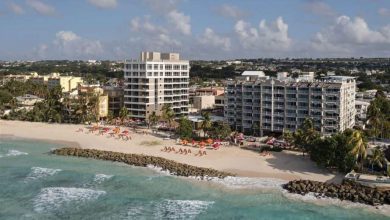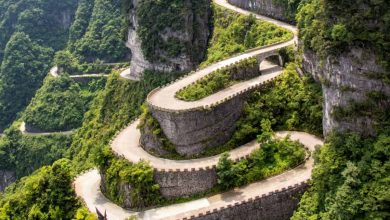Park Güell: Cultural Heritage Profile

Diplomat.Today
Welcome to our comprehensive travel guide to visiting Park Güell, a destination known for its unique blend of cultural richness, history and educational value in Barcelona, Spain.
Here you will find detailed insights into what makes Park Güell such a unique cultural attraction.
About
Gallery
Details
Assessment of cultural heritage
Universal appeal and cultural authenticity
Cultural wealth and educational value
Conservation and integrity
Accessibility and visitor engagement
Overall rating: 4.4/5
Global influence
- Park Güell is a UNESCO World Heritage Site, contributing to its global recognition and significance for the preservation of cultural heritage.
- It attracts millions of international visitors every year, making it a major driver of Barcelona tourism and contributing to the city’s global appeal.
- Park Güell’s unique architectural and artistic elements have had a profound influence on global art and design, inspiring artists and architects around the world.
- Barcelona, the city where Park Güell is located, regularly hosts international events and collaborations that highlight the cultural and artistic significance of the park.
Historical impact
- Park Güell was designed by the famous architect Antoni Gaudí and represents an important historical event in the development of modernist architecture at the beginning of the 20th century.
- Its architectural and archaeological significance lies in its innovative design, which integrates natural elements with man-made structures and reflects Gaudí’s unique style and vision.
- The creation of Park Güell is deeply intertwined with Barcelona’s history and reflects the city’s cultural and artistic contributions to the world.
- Antoni Gaudí, the mastermind behind Park Güell, is a notable historical figure associated with the place. He is known for his groundbreaking architectural designs and contributions to Catalan modernism.
Conservation efforts
- Current conservation projects aim to preserve the structural integrity and artistic elements of Park Güell to ensure its long-term preservation.
- Organizations such as UNESCO and local conservation associations actively protect the park’s heritage and promote sustainable conservation practices.
- Funding and support for conservation efforts come from a combination of public and private sources, reflecting the shared commitment to protecting this cultural treasure.
- The local community actively participates in conservation efforts through volunteer programs, educational initiatives and advocacy for the sustainable management of Park Güell.
Historical importance
Located in Barcelona, Park Güell was constructed between 1900 and 1914 and officially opened as a public park in 1926. It was designed by the famous Catalan architect Antoni Gaudí and commissioned by Eusebi Güell, a wealthy industrialist. The park was originally intended as a residential garden city, but the project failed and only two houses were built. However, the park itself has become an important cultural and historical monument in Barcelona.
Cultural importance
Park Güell has enormous cultural importance within Barcelona and beyond, influencing local traditions, arts and community activities. A UNESCO World Heritage Site, it is a testament to Gaudí’s architectural genius and contribution to the Catalan modernist movement. The park’s unique design and integration with nature reflect Barcelona’s artistic and cultural identity and attract visitors from all over the world.
Architectural style
The architectural style of Park Güell is characterized by Gaudí’s signature modernist and organic design elements. The park features vibrant mosaics, undulating structures and whimsical architectural forms that blend seamlessly with the natural environment. Gaudí’s use of innovative structural techniques and the incorporation of colorful ceramic tiles and sculptural details make Park Güell a prime example of his visionary architectural style.
Visitor experience
Visitors to Park Güell can expect an engaging experience while exploring the unique architectural and natural landscape. The park offers guided tours that provide insight into Gaudí’s creative vision and the history of the site. In addition, visitors can enjoy various cultural events, concerts and exhibitions that take place in the park, adding to the overall atmosphere and enriching the visitor experience.
Accessibility and amenities
Park Güell is accessible to different groups of people, including families and people with disabilities. The park offers accessible trails and facilities to ensure a comfortable visit for all visitors. Amenities such as toilets, cafes and gift shops are available within the park, improving the overall visitor experience.
Best time to visit
- Early morning visits: Arrive at 9:30 AM and experience the park with minimal crowds and optimal conditions for photography.
- Weekday afternoons: Visit in the early afternoon on weekends, when there are fewer crowds than on weekends, ensuring a more relaxed exploration.
- Late afternoons: Explore the park after 4:00 PM and enjoy a quieter atmosphere and the beautiful evening light for photos.
Ratings and reviews
Park Güell is highly praised for its stunning architectural beauty, unique design and cultural significance. Visitors often appreciate the tranquil atmosphere and the opportunity to discover Gaudí’s masterful creations. However, some common complaints include crowds during peak season and limited access to certain areas due to conservation efforts. Compared to similar attractions in the area, Park Güell stands out for its exceptional mix of nature, art and architecture.
Photographic possibilities
Park Güell offers numerous photogenic spots, including the iconic mosaic dragon fountain at the entrance, the undulating serpentine bench on the main terrace and the panoramic views of Barcelona from the higher points in the park. The late afternoon light often provides the best conditions to capture the vibrant colors and intricate details of the park’s architectural elements.
- Universal appeal and cultural authenticity: 90/100
- Park Güell offers a unique blend of architecture and nature, a testament to Catalan culture and Gaudí’s genius.
- The design of the park is authentic and reflects the essence of Barcelona’s artistic heritage.
- Its widespread recognition by UNESCO further strengthens its status as a culturally significant site.
- Cultural richness and educational value: 85/100
- The park offers guided tours and information materials that provide in-depth insights into Gaudí’s history and vision.
- It is a living museum where visitors can learn more about modernist architecture and Catalan culture.
- Although some areas are busy, the park offers numerous educational opportunities through exhibits and cultural events.
- Retention and integrity: 80/100
- Although adequate conservation measures are in place, limited access to certain areas due to conservation may impact the visitor experience.
- Funding and support from UNESCO and local organizations underline the commitment to preserving this cultural treasure.
- Ongoing projects aim to preserve the structural and artistic elements of the park.
- Accessibility and visitor engagement: 75/100
- Park Güell is accessible to a wide audience, including people with disabilities, but the park can become very crowded, which negatively affects visitor comfort.
- Visitors often cite long lines and the need to book in advance as potential problems, but these measures help manage the integrity of the site.
- Additions such as cafes and gift shops improve the overall visitor experience, although more facilities and clearer signage can improve this further.
- Cultural events and interactive opportunities within the park add to its appeal, although more interactive experiences are needed.



